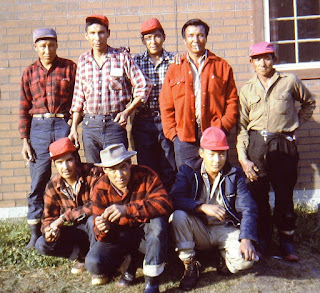Coronavirus or Covid-19 may seem off-topic for this blog but something Canada Health Minister Patty Hajdu, who incidentally is from Thunder Bay, said yesterday shows how relevant it is. In essence, she said that like other Canadians, she wishes she could self-isolate at a cabin on an island in a lake somewhere until the whole crisis was over but we have no choice but to deal with it, here and now. I would add we also only have one chance to get it right.
I believe all levels of our government are doing the right things by shutting down everything but essential services, telling people to self-isolate, insisting travellers quarantine for 14 days and shutting down the border. All these measures are temporary. When the spread of the infection has stopped, things will start up again. It's a hit to the economy, of course, but the alternative is utterly grim.
Epidemiologists -- scientists who study how epidemics spread -- say that until a vaccine is developed every member of the human race will eventually get Covid-19. What does
eventually mean? Without the delaying measures we are now taking, almost everyone would get it in the first year and whoever doesn't would get it in the second. That's how quickly it would spread.
It is NOT like the flu
The various seasonal flus that we get have been around for years and we all have at least a partial immunity to them, especially if you get the flu shot. Still, the flu kills tens of thousands in the United States and hundreds to over a thousand in Canada every winter, mostly elderly people but younger ones as well.
Is is estimated
eight per cent of the population gets the flu each winter and of those who get sick,
0.1 per cent will die from it.
Now let's look at Covid-19. Disaster planning models have estimated it could infect
40 per cent to 80 per cent of the population and the mortality rate will be
1-3 per cent. The higher mortality rate comes when health care systems are overwhelmed and can't treat everybody, exactly what is happening in Italy right now.
Let's look at the worst-case scenario -- 80 per cent get sick and three per cent die. In the U.S. that would mean
7,900,000 deaths. That would compare with 419,000 deaths in the Second World War.
Here's the numbers for Canada:
910,000 deaths as compared to 43,600 deaths in the last world war.
It is catastrophically worse than seasonal flu deaths
But that is the worst of the worst case. The other end of the worst-case prediction was that 40 per cent get sick in which instance all the numbers above are cut in half. It's still horrendous.
All of the above, however, is what is estimated
could happen if no measures were taken, if we just carried on as usual. Fortunately, we are taking measures. We are self-isolating, we are social-distancing, we are quarantining sick people, we are stopping people from moving around.
Although we can't stop this from spreading entirely we can drastically slow its spread until a vaccine is developed. Once everyone gets vaccinated, we are home free. Or at least all but the anti-vaxxers will be in the clear.
Meanwhile, we can keep the hospitals from being snowed-under. We can increase our capability to look after the very sick with more beds, more protection equipment, more ventilators.
These measures are all that is keeping the situation in the realm of the possible.
We can prevent millions of deaths. Just by staying home and staying away from each other for a couple of months.
If you live in a place where politicians or anyone else is considering relaxing restrictions, call them up and chew their ass off. Tell them to prove the sincerity of their convictions by first getting sick with coronavirus themselves. Then they can tell the rest of the population how harmless it is.
There is one other myth that needs exploding, that young people don't get seriously sick. The facts show that people ages 20-40 and 40-60 are as likely to need hospitalization as those over 60. They just are
less likely to die as those over 60. But in a full-blown pandemic, the hospitals are over-run. It won't be possible for many of those younger people to be hospitalized and their death rate will increase substantially.
Stay home. Stay the course. Tell stupid politicians what you think.
We only have one chance to get this right.





















